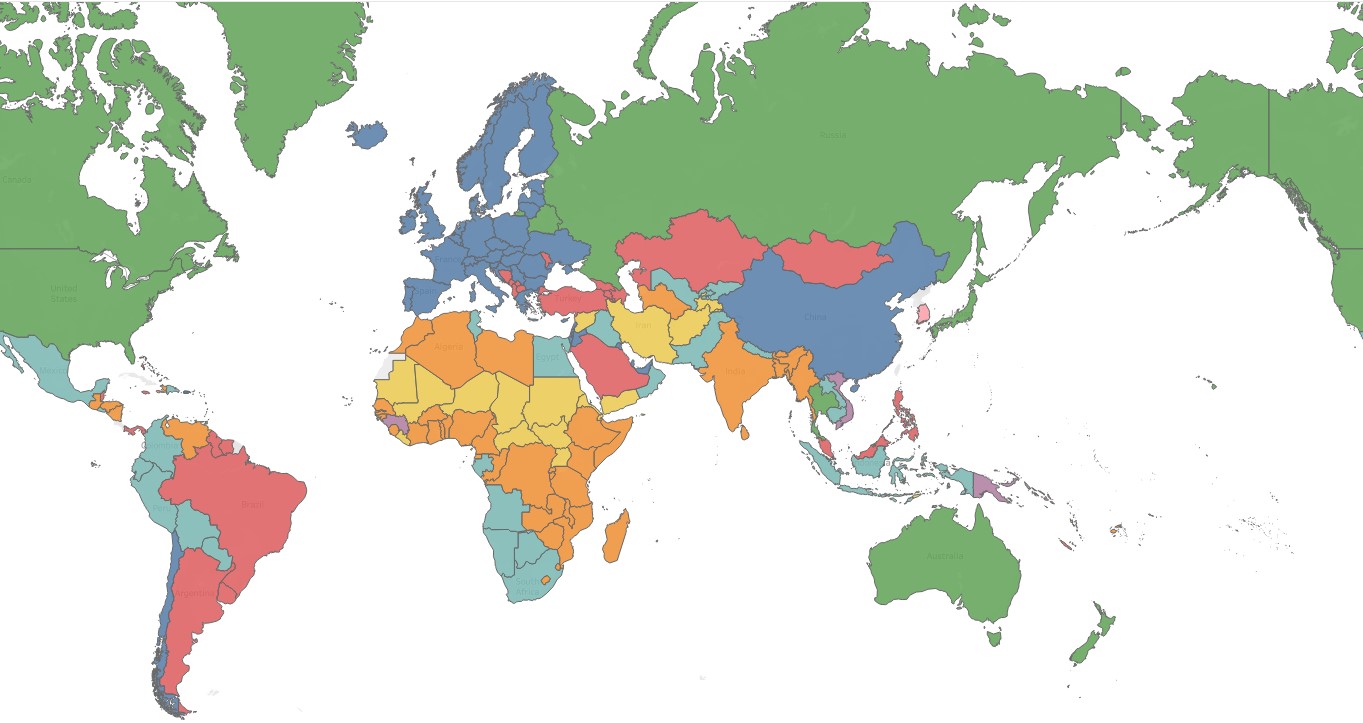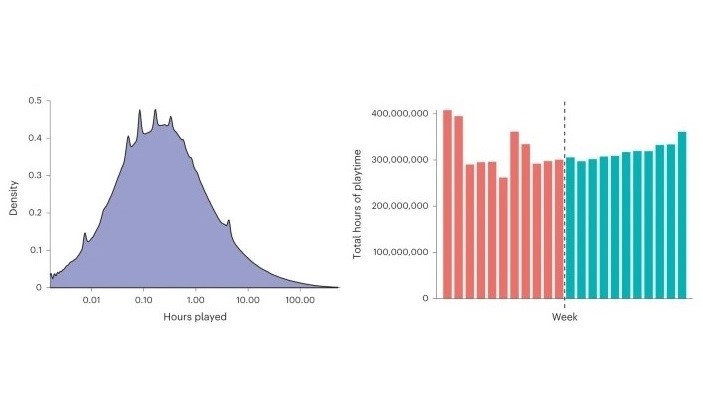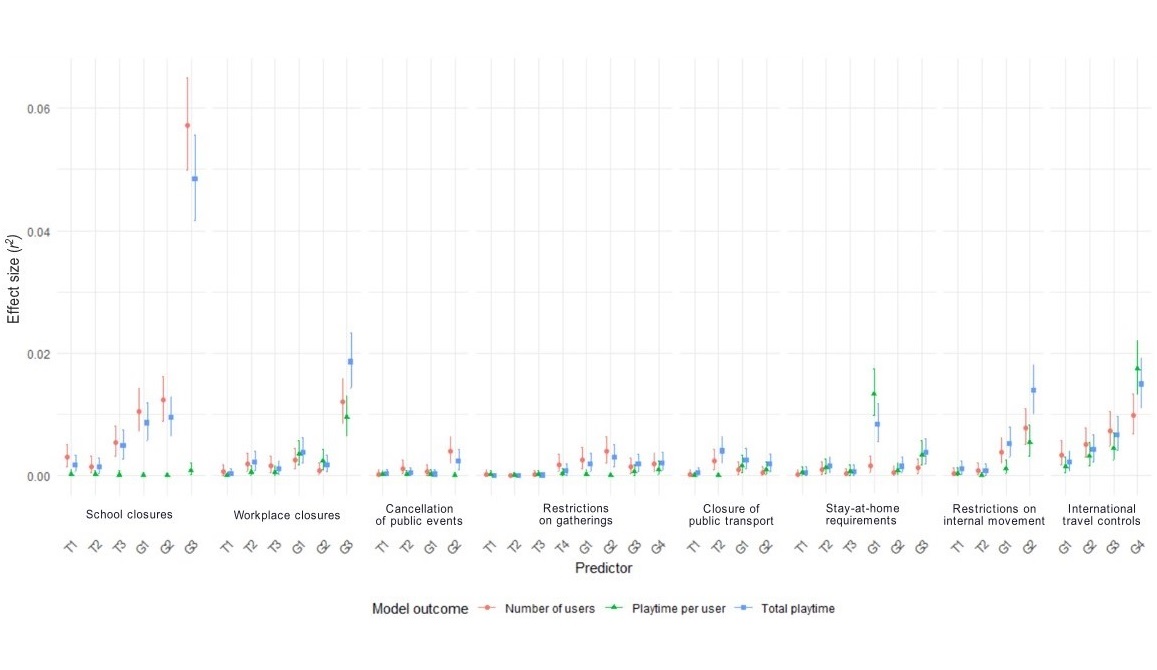Global Demographics and Play Factors
Discussion of Relationships Between Global Demographic Factors and Play

Below is a more in-depth look at the impact of demographic factors on a global scale disccused in Project 6: Global Demographics and Play.
This project was completed with data from ![]() in addition to
data collected through the World Bank.
Note: data is collected from player engagement between October 2020-October 2021.
in addition to
data collected through the World Bank.
Note: data is collected from player engagement between October 2020-October 2021.
Overview
Demographic factors are somewhat harder to find for a broader collection of international places. Unlike the US, there is not a similar process for every place nor is there a broad scale reliable Census collecting the same types of information that were used in Project 5. With that in mind, information was taken from the World Bank to explore the relationship between play and two demographic-related factors: average internet access and average BA attainment in a place.
Internet Access and Play
When it comes to the global scale, internet access has some relationship with what we see in terms of gameplay, but the influence varies across behavioral cluster (e.g., A-Type gaming cultures that have unequal play engagement versus H-Type cultures with extreme gaming) and by place (e.g., Singapore versus Hong Kong).
Overall, internet access has more of a relationship with duration of play per capita, with players engaging in longer sessions, than it does with average play per day among players internationally. When places are collapsed into their behavioral clusters, these relationships become clearer, with a stronger relationship between average internet access in a place and average duration per capita, but with less of a connection between internet access and average daily play.
Likely this is related to other cultural factors linked to these behaviors, with more or less emphasis on gaming in specific places or other potential demographic factors that could influence engagement with games.
Below are two interactive graphs charting these relationships. The first graph shows both behavioral clusters and places, while the second graph focuses on highlighting clusters. Hover over each point for more information or click an individual point to isolate a place or behavioral cluster as outlined in Project 1.
Educational Attainment and Global Play Engagement
Similarly to average internet access, average BA degree attainment in a place has a mixed relationship with video game play. Average duration per capita has a somewhat positive relationship – as a place has more of the population attaining a BA, there are somewhat longer durations of play among players. Looking at average play per day, however, the relationship is less defined and connected to BA attainment, with many places having lower BA attainment and higher average daily play or high BA attainment and comparatively lower average daily play.
Below is another interactive graph illustrating these dynamics.
As with internet access, BA attainment may be an indicator of other factors (e.g., GDP or average income, for example), but these analyses give some insights into the decoupling of duration per capita and average daily play among players internationally.
Education, Internet, Number of Sessions, and Heavy Play
These demographic-related factors may also have links to other play behaviors, including the number of sessions that people play and what can be thought of as “heavy” play. As in the other projects, heavy play is defined by playing a game for 6 or more days during the week for more than 4 hours per day on average.
For some places, like the Djibouti, more average internet access means a higher average number of play sessions. For most places, however, the number of sessions is not predictably influenced by average BA attainment or average internet access in a place.
When looking at heavy play, though, both of these demographic-related factors do have a positive relationship, with higher average BA attainment and higher average access to internet aligning with more heavy play in a place.
Below is an interactive graph showing all of these dynamics.
Conclusions and Takeaways
As noted in Project 5, there is a limited understanding of how demographic factors impact video game play, particularly on the global scale. This project starts to highlight some of these dynamics, with some influence from average internet access and average BA attainment on average playtime duration and average “heavy” play. At the same time, however, there is little apparent impact on average play per day or number of sessions played on average.
More work should be done to investigate these dynamics further, to see what elements of culture or demography may relate to and influence play behaviors, particularly on a global scale that has varied clustering of play behaviors. For now, the puzzle of what elements in particular places links to increased play points to some often-surprising results.
To keep up with trends in behaviors, refer to other projects currently underway!



